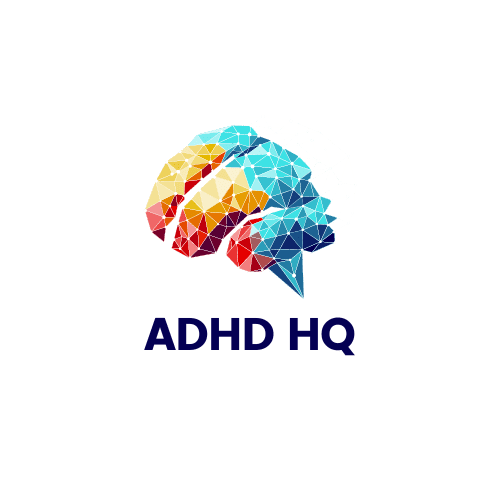Dyslexia Checklist for Parents
As a parent, I noticed my child struggling with reading simple words and becoming frustrated during homework sessions. These challenges were perplexing until I stumbled upon a checklist that shed light on potential signs of dyslexia.
Understanding these indicators was just the beginning of a journey towards revealing the support my child needed. The checklist not only helped me identify possible red flags but also provided insights into how to navigate the complexities of dyslexia.
Discovering this resource was a game-changer, offering a roadmap for supporting my child's learning journey in ways I never imagined.
Key Takeaways
- Recognize early signs of dyslexia in young children for timely intervention.
- Engage with educators and specialists to assess and support your child's needs.
- Use dyslexia checklists and resources to advocate for necessary assistance.
- Ensure academic success by collaborating with professionals and empowering your child's educational journey.
Early Signs of Dyslexia

If your child is struggling to learn nursery rhymes like Jack and Jill, it could be an early sign of dyslexia. Dyslexia manifests early on, often before formal reading instruction begins. Signs may include difficulty with alphabet letters, recognizing their own name, and challenges with phonological awareness. In preschool, these struggles with basic language skills can become apparent. Children with dyslexia might find it hard to pick up on rhyming patterns like cat, bat, and rat.
Recognizing these early indicators is essential for early intervention. Mispronunciation of familiar words or persistent baby talk could also point to dyslexia in young children. It's essential for parents and educators to observe these signs and provide the necessary support and resources.
Preschool and Kindergarten Indicators

I want to highlight some important points about identifying dyslexia in preschool and kindergarten children.
Pay close attention to early signs like struggles with nursery rhymes, alphabet recognition, and rhyming patterns.
These indicators can offer valuable insights into your child's communication development and reading readiness skills.
Early Signs to Watch
What're the early signs that parents should watch for in preschool and kindergarten-aged children that could indicate dyslexia? When observing young children for signs of dyslexia, pay attention to:
- Struggles with Nursery Rhymes: Difficulty in learning nursery rhymes like 'Jack and Jill' could be an early indicator of dyslexia in preschoolers.
- Alphabet Recognition Issues: Trouble with alphabet letter names and recognition, particularly with their own name, may signal dyslexia in young children.
- Mispronunciation and Rhyming Patterns: Mispronouncing familiar words and struggling with recognizing rhyming patterns, such as cat, bat, rat, could be red flags for dyslexia in kindergarten-aged children.
Being aware of these early signs can help parents and educators provide timely support to children struggling with basic language and literacy skills.
Communication Development Milestones
Preschool and kindergarten are pivotal stages when observing communication development milestones can provide valuable insights into identifying dyslexia in young children. In preschoolers, difficulty learning nursery rhymes like Jack and Jill, struggling with alphabet recognition, mispronouncing familiar words, or using persistent baby talk could be indicators of dyslexia.
Additionally, a lack of recognition of rhyming patterns, such as cat, bat, rat, may also point to potential dyslexia in young children. By paying close attention to these language development markers, parents and educators can recognize early signs of dyslexia in children.
It's important to address any concerns promptly and seek professional evaluation and support to help children with dyslexia thrive academically and emotionally.
Reading Readiness Skills
Wondering how to assess your child's readiness for reading in preschool and kindergarten? Here are some indicators to look out for:
- Difficulty learning nursery rhymes like Jack and Jill can be a sign of potential reading readiness challenges in preschoolers.
- Mispronunciation of alphabet letter names and struggles with recognizing their own name may indicate early signs of dyslexia in young children.
- Persistent trouble with recognizing rhyming patterns, such as cat, bat, rat, could suggest the need for further assessment for dyslexia in preschool and kindergarten-aged children.
It's essential to pay attention to these early signs and seek support if you notice any reading challenges to provide the necessary help for your child's development.
Elementary School Symptoms

As a parent, it can be concerning to see your child struggle with reading and writing in elementary school. Some signs to look out for include difficulties with phonological awareness, decoding, and spelling.
It's important to communicate with teachers, seek early detection methods, and address the academic challenges that may arise.
Early Detection Methods
When observing elementary school children for signs of dyslexia, parents may notice difficulties with reading fluency and accuracy, as well as challenges in phonological awareness and decoding skills. Early detection is critical for implementing effective interventions and providing necessary support.
Here are three key ways parents can detect dyslexia in elementary school:
- Monitor Reading Progress: Keep track of your child's reading development and look for persistent struggles with fluency and accuracy.
- Assess Phonological Skills: Pay attention to your child's ability to recognize and manipulate sounds in words, as difficulties in phonological awareness can be an early sign of dyslexia.
- Observe Writing and Spelling: Notice any persistent issues with spelling and writing that go beyond what's developmentally appropriate for their age.
Academic Challenges Present
Parents observing elementary school children for signs of dyslexia may notice academic challenges such as difficulty with reading, spelling, and writing. Children struggling with dyslexia often find phonics, decoding skills, and sight words particularly challenging. This can lead to poor reading fluency and comprehension compared to their peers.
In written work, inconsistencies in spelling, frequent letter reversals, and struggles with organizing thoughts may be apparent. These academic challenges can be frustrating for both the child and the parents. It's essential to address these issues promptly to provide the necessary support and interventions.
Communication With Teachers
Establishing open and regular communication with your child's teachers is crucial in addressing any concerns or observations related to dyslexia symptoms in elementary school. When communicating with teachers about dyslexia symptoms, consider the following:
- Share specific examples of your child's struggles with reading, writing, and spelling to provide teachers with a better understanding of the challenges your child is facing.
- Request a meeting with the school's special education team to explore potential interventions and accommodations that can support your child's learning needs.
- Collaborate with teachers to create a dyslexia-friendly classroom environment that includes multisensory teaching methods and assistive technology tools.
Middle School Challenges

Traversing middle school can present unique challenges for students with dyslexia that require tailored support and understanding. As dyslexic students face increased academic demands, longer assignments, and more complex reading materials, they may experience struggles with organization, time management, and remembering multiple instructions.
This phase can also be when students start feeling self-conscious about their learning differences. It becomes important for dyslexic students to receive specialized support and accommodations to navigate these challenges effectively. Parental involvement plays an important role during this time, working closely with teachers and school staff to make sure that their child's needs are being met appropriately.
High School Red Flags

Traversing high school can pose specific challenges for students with dyslexia, particularly when they encounter difficulties with complex vocabulary and abstract concepts. Recognizing red flags in high school is pivotal for early intervention and support. Here are some signs to watch out for:
- Struggling with Reading Comprehension: Difficulty understanding and analyzing written text can be a significant indicator of dyslexia in high school students.
- Issues with Writing: Trouble expressing thoughts clearly in writing, organizing essays, and following directions for assignments may signal dyslexia.
- Challenges in Timed Exams: Poor performance in timed tests, coupled with difficulty with long reading assignments, could point towards dyslexia in high school.
Noticing behaviors like avoiding reading out loud, struggling with spelling and grammar, and facing obstacles in note-taking should prompt further evaluation and support for students with dyslexia. Being aware of these red flags can help parents and educators provide the necessary assistance to help students thrive academically.
Parental Support and Resources

To best support your child with dyslexia, it's essential to actively seek out available parental resources and support networks.
Using a dyslexia checklist can help parents identify signs of dyslexia, such as reading and writing difficulties. These checklists provide a structured way to assess your child's learning profile and understand their needs better.
By advocating for appropriate support based on the checklist findings, parents can make sure their child receives the necessary help. It's important to use the information gathered from the checklist to engage with educators and specialists for further evaluation.
Taking proactive steps, guided by the checklist results, empowers parents to support their child's educational journey effectively.
Frequently Asked Questions
What Are the 3 Main Symptoms of Dyslexia?
The three main symptoms of dyslexia are difficulty with reading, writing, and spelling. Early intervention, reading strategies, and school accommodations are essential. Parent support, understanding learning differences, and utilizing educational resources help immensely in addressing dyslexia challenges.
What Are Red Flags of Dyslexia?
Struggling with nursery rhymes, mispronouncing common words, and trouble recognizing rhyming patterns are red flags for dyslexia. Early intervention, visual processing, phonological awareness, and multisensory learning are essential for support.
How Do I Know if My Child Is Dyslexic?
If my child struggles with reading, spelling, or writing despite intelligence, early intervention is crucial. Seek dyslexia testing, utilize reading strategies, access learning support, parent resources, school accommodations, technology tools, support groups, and educational resources to enhance dyslexia awareness.
What Does a Typical Day Look Like With Someone With Dyslexia?
A typical day with dyslexia involves daily struggles with reading, writing, and spelling. Coping mechanisms like creativity and humor help navigate challenges. Support systems, classroom accommodations, and homework help are essential for overcoming learning difficulties.
Conclusion
As a parent, recognizing the signs of dyslexia early on can make a world of difference for your child's academic success and emotional well-being.
By taking note of the checklist and seeking support, you're setting your child up for success in overcoming any challenges they may face.
Remember, with the right resources and encouragement, your child's potential is as limitless as the stars in the sky.







